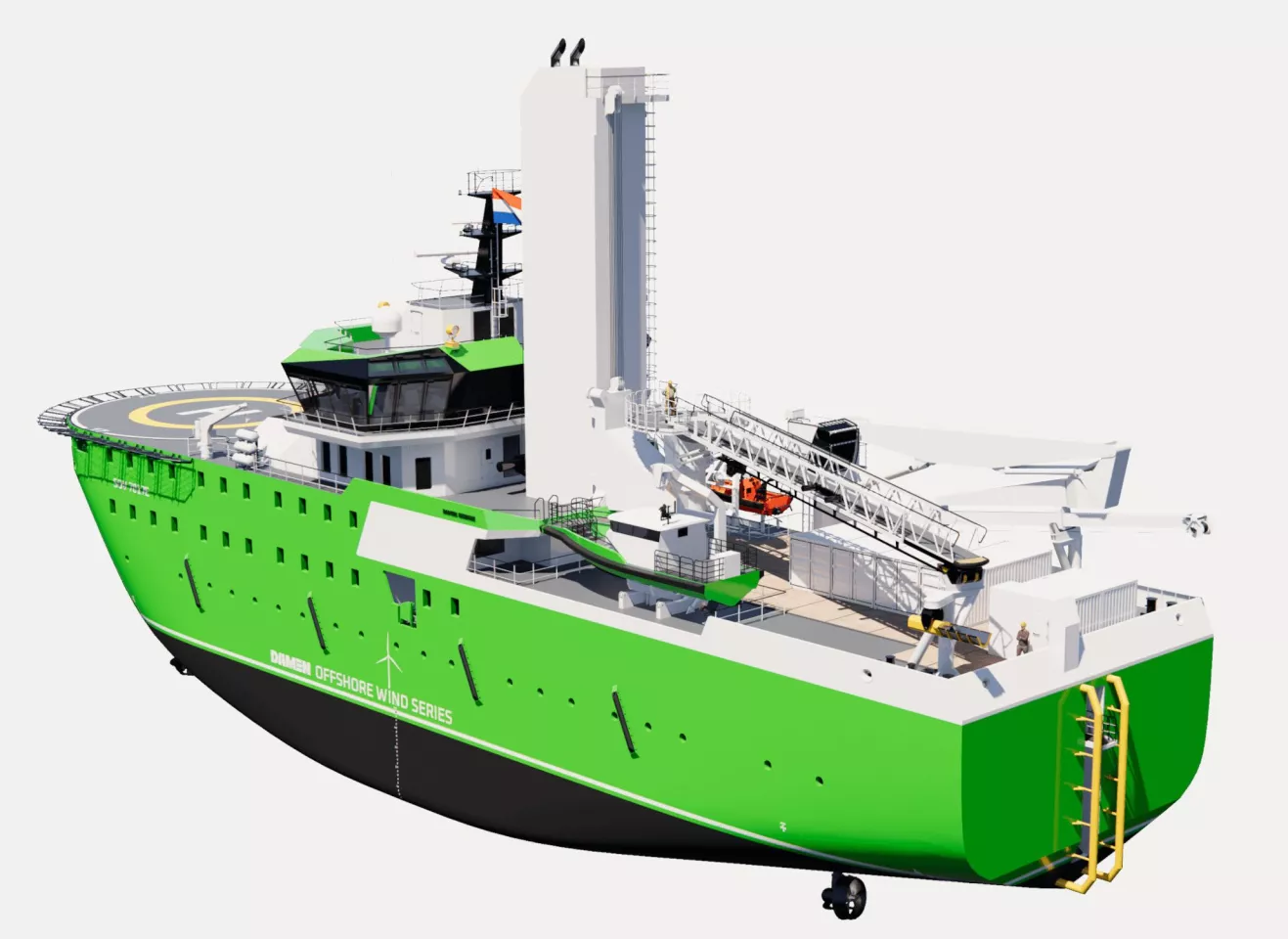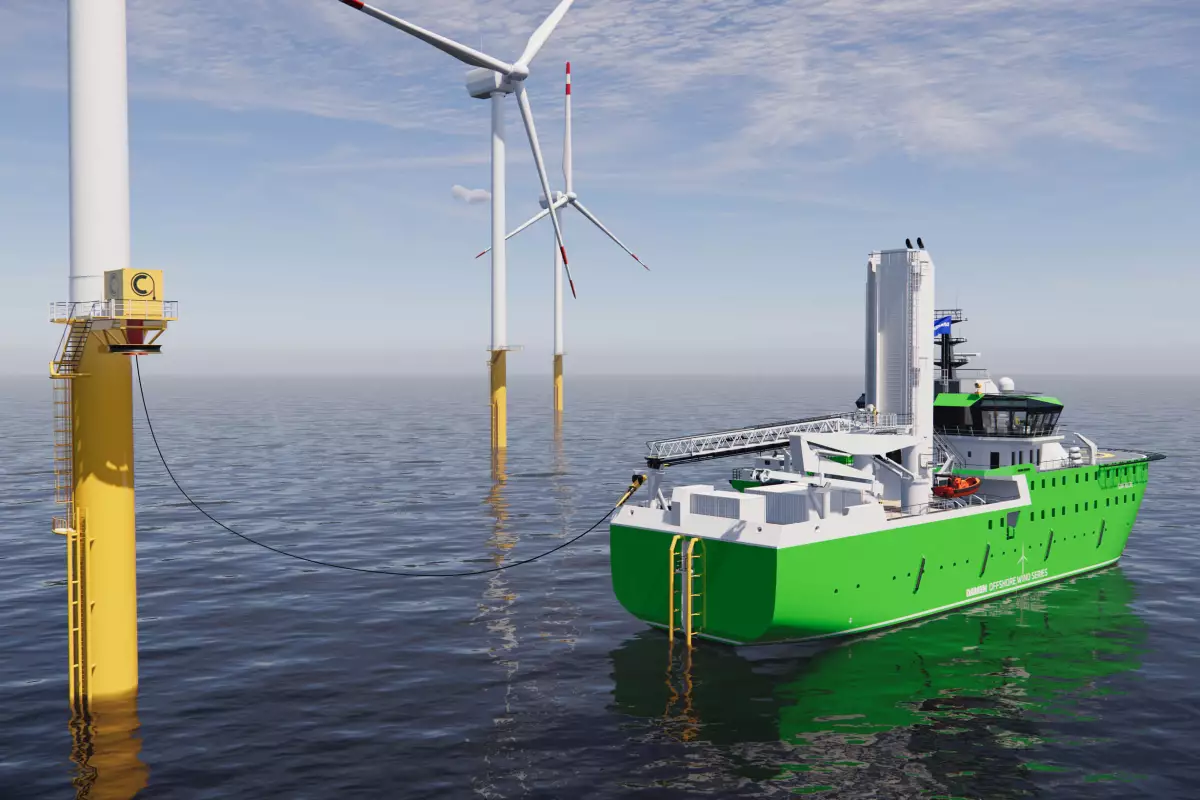Dutch ship builder Damen has announced an all-electric version of its 70-m-long hybrid service vessel designed to support offshore wind farm operations. And the company is aiming to charge the batteries direct from a wind turbine.
Groups of giant turbines harvesting wind energy are becoming an increasingly common sight off coastlines around the globe, but the vessels used to meet their servicing needs are not as clean and green as they could be. That's where the SOV 7017 E comes in.
Damen currently offers four Service Operation Vessels running from 60 to 88 m (196.8 - 288.7 ft) in length and able to accommodate between 44 and 120 personnel at any one time – and they all run hybrid diesel/battery propulsion systems with four azimuth thrusters.
The new 70.1-m (229.9-ft)-long electric vessel also comes with two HVO/diesel generators, but these are included for emergency or backup purposes. The 7017 E is available with a 15-MWh Lithium Iron Phosphate battery system for an estimated 98% of all-day full electric operations, or a 10-MWh battery bank for 75% electric operations. The propulsion system shapes up as four 900-kW azimuth thrusters in double-ended arrangement. Top speed is 12 knots.

Damen has partnered with the UK's MJR Power & Automation for a novel offshore charging solution which makes use of the vessel's motion-compensated gangway to bridge the gap between the vessel and a wind turbine or offshore substation, and allow the battery bank to be topped up at sea via a 4-MW/11-kV connector while the 7017 E is in low-power mode.
The company reckons that a single turbine could fully charge the vessel's battery "in just a few hours." Wind turbines and offshore substations will need to have offshore charging stations installed of course, but existing offshore infrastructure can be utilized. The gangway is controlled from the wheelhouse, and plugging in and unplugging are undertaken "without manual intervention." MJR is currently working on an 8-MW offshore charging solution to enable larger vessels in Damen's fleet to go fully electric.
The vessel can be configured with 60 cabins with Wi-Fi and access to video-on-demand services to accommodate up to 40 technicians plus crew, as well as storage space, workshops, restaurant, gym and game room.
"The product launch of the SOV 7017 E demonstrates that the technology is there to make offshore operations fully electric," said Damen's Mark Couwenberg. "The reduction in OPEX implied by harvesting energy directly from the offshore wind farm implies a business case for this model. We cannot do this alone, however. To make this a reality will require collaboration throughout the chain, with ship builder, vessel operator and wind farm developer working together in pursuit of mutual benefit. We’re looking forward to participating in such cooperations as we take this concept forward. Together, we can make our offshore energy production more sustainable."






